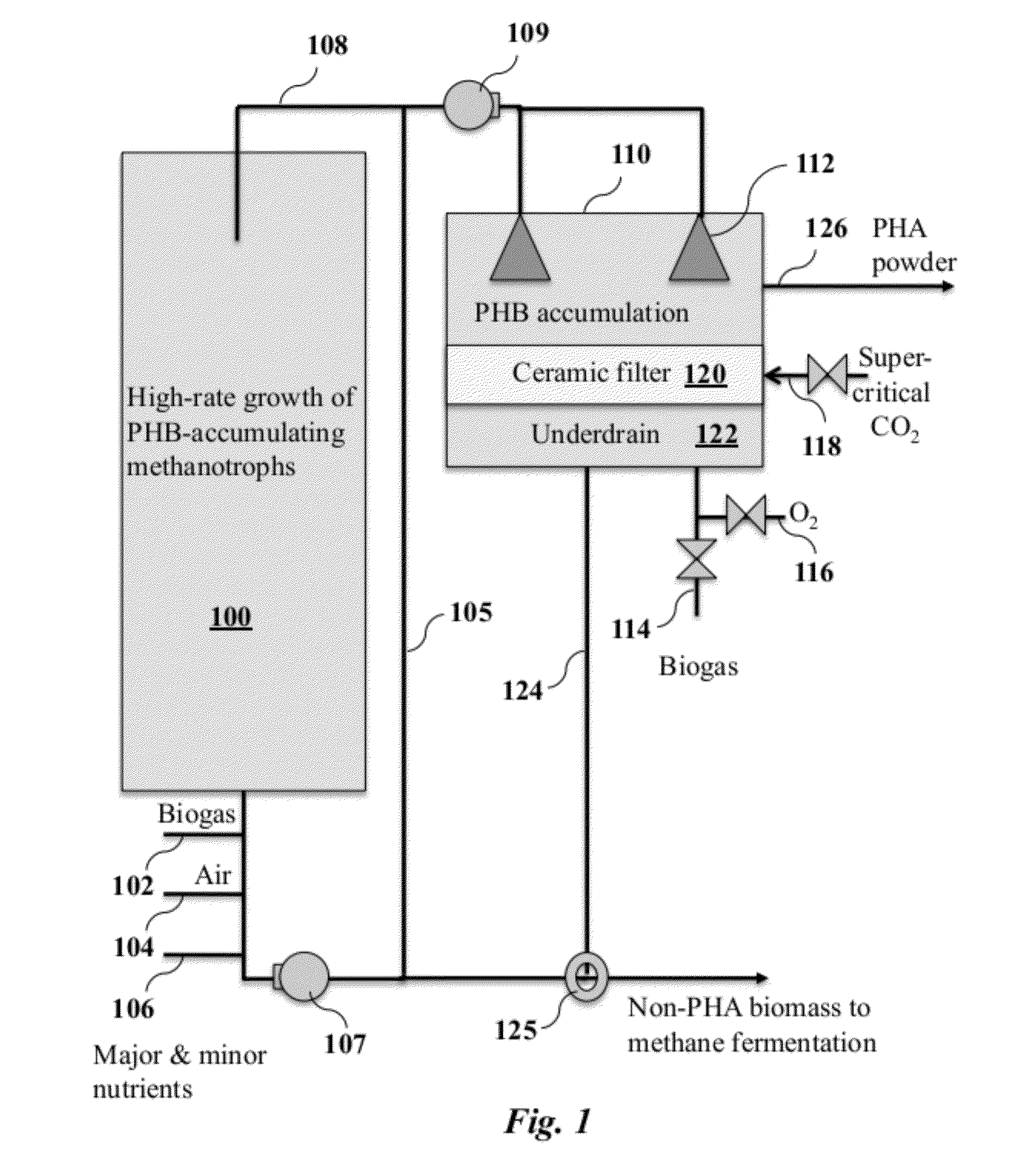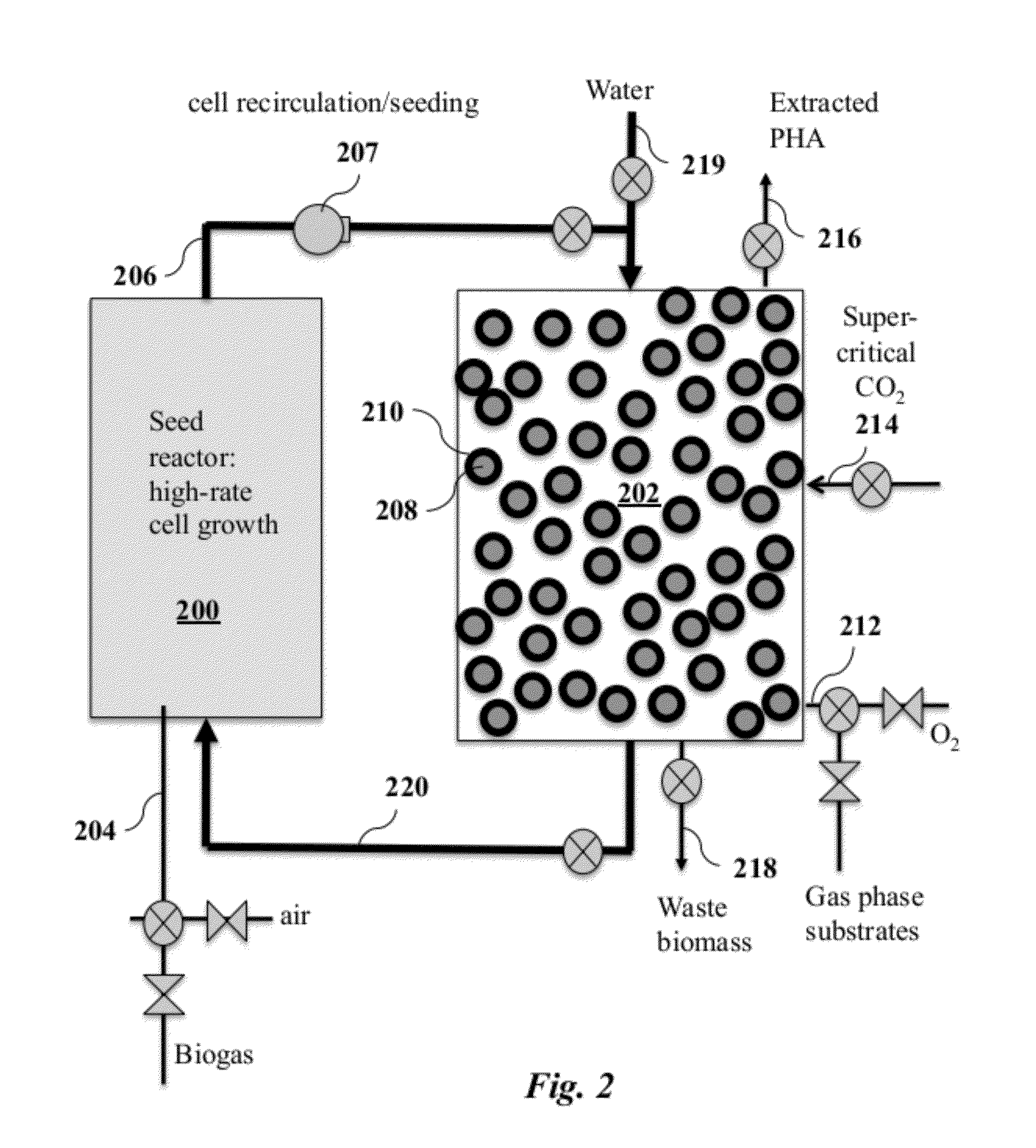High Solids Fermentation for Synthesis of Polyhydroxyalkanoates From Gas Substrates
- Summary
- Abstract
- Description
- Claims
- Application Information
AI Technical Summary
Benefits of technology
Problems solved by technology
Method used
Image
Examples
Embodiment Construction
[0015]Embodiments of the present invention provide for improvements in the production of polyhydroxyalkanoates (PHAs) by communities of microorganisms in bioreactors. During unbalanced growth, a nutrient such as N or P limits growth and biopolymer accumulates inside the cells. In contrast with conventional methods, in embodiments of the present invention the unbalanced growth occurs in a high solids phase in which the carbon feedstock provided as a gas. In the context of the present invention, “high solids” refers to the use of biomass within a chamber that is filled predominately with gas rather than liquid fluids, where the biomass is composed of at least 20% solid phase biomass by volume in an attached or immobilized state within the chamber.
[0016]FIG. 1 is a schematic illustration of one possible bioreactor configuration that may be used to achieve high solids polyhydroxyalkanoate (PHA) production from gaseous alkanes according to an embodiment of the invention. A bioreactor ves...
PUM
 Login to View More
Login to View More Abstract
Description
Claims
Application Information
 Login to View More
Login to View More - R&D
- Intellectual Property
- Life Sciences
- Materials
- Tech Scout
- Unparalleled Data Quality
- Higher Quality Content
- 60% Fewer Hallucinations
Browse by: Latest US Patents, China's latest patents, Technical Efficacy Thesaurus, Application Domain, Technology Topic, Popular Technical Reports.
© 2025 PatSnap. All rights reserved.Legal|Privacy policy|Modern Slavery Act Transparency Statement|Sitemap|About US| Contact US: help@patsnap.com



